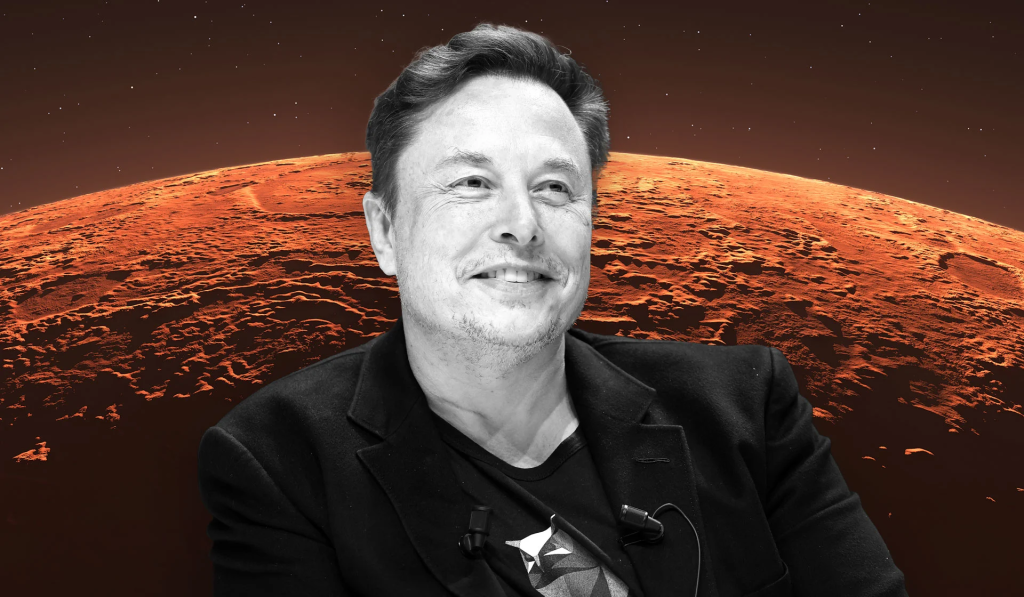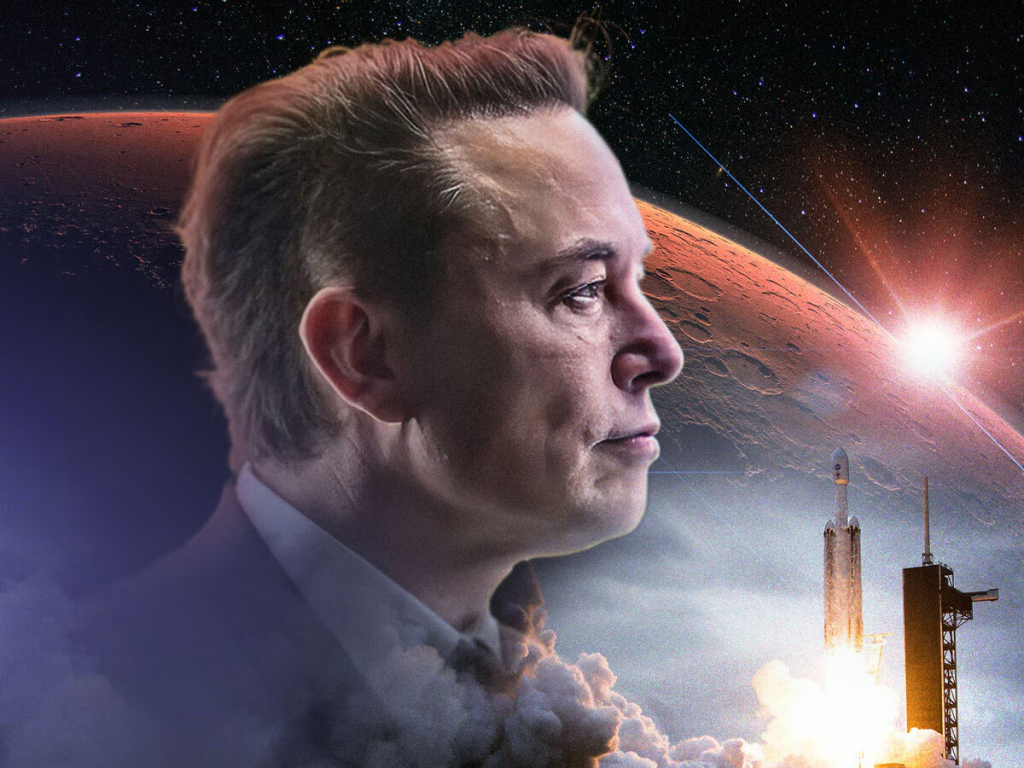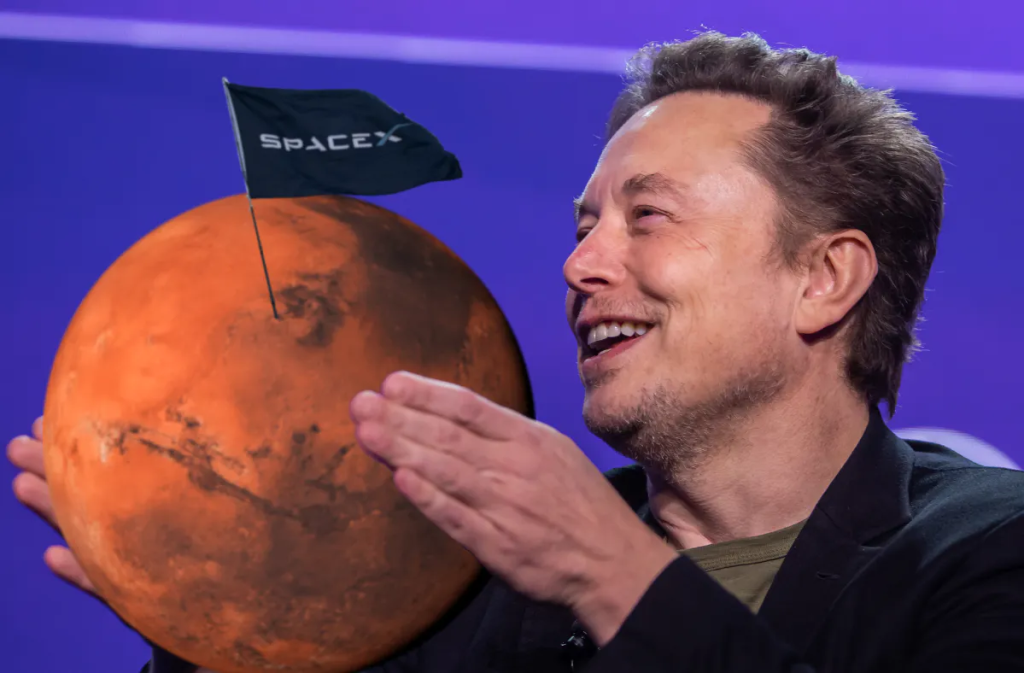
In a move that has left space enthusiasts and industry experts buzzing with excitement, Elon Musk, the visionary CEO of SpaceX, has boldly claimed that the company is on track to send its first uncrewed Starships to Mars within the next two years.Musk, known for his ambitious and sometimes controversial timelines, made the announcement during a recent interview, stating, “We’re at the beginning of a Mars transit window now, and they occur every 26 months.So, in just over two years, we’ll be sending our first uncrewed Starships to Mars. And then, if those work out well, and we don’t increment the crater count on Mars, we’ll send humans two years out of that.”This statement, while still speculative, has sent shockwaves through the space exploration community. For Musk, the idea of colonizing Mars is not a distant dream but a practical, achievable goal that could transform humanity’s future.SpaceX’s Starship, the company’s cutting-edge spacecraft designed for deep-space missions, is central to Musk’s vision of Mars colonization. But how feasible is this plan, and what exactly does Musk mean by “transit window”?In this article, we will explore Musk’s ambitious vision for Mars, what the timeline could realistically look like, and the technological and logistical challenges SpaceX must overcome to make this vision a reality. As Musk himself would say, “It’s not about getting to Mars; it’s about making life multi-planetary.”To understand Musk’s ambitious timeline, we must first delve into the concept of the Mars transit window. The term refers to the optimal period when Earth and Mars are aligned in their orbits, making travel between the two planets the most efficient and energy-effective.These windows occur approximately every 26 months, with the next one coming up in 2026, making it the ideal moment for SpaceX to send its first uncrewed Starship to Mars.During this transit window, the distance between Earth and Mars is minimized, allowing spacecraft to travel the shortest distance with the least amount of energy. Without these favorable windows, missions to Mars would require much more fuel, time, and resources.This alignment of the planets is essential for Musk’s timeline, as it determines when the first uncrewed mission can take place.For SpaceX, this means that the next Mars transit window, occurring in 2026, is a crucial opportunity to send the Starship spacecraft on its maiden voyage to the Red Planet.The uncrewed mission will serve as a test, allowing SpaceX to assess the performance of the spacecraft during the trip and gather valuable data on the conditions of space travel to Mars. If successful, the next step will be sending humans—likely a crew of astronauts—on a similar journey within the following two years.At the heart of this plan is Starship, SpaceX’s flagship spacecraft that Musk envisions as the vessel for deep-space exploration. Starship is designed to carry both crew and cargo on missions to destinations beyond Earth’s orbit, including the Moon, Mars, and beyond.Musk’s dream of Mars colonization is inherently tied to Starship, as it is the only spacecraft capable of carrying the necessary payloads and sustaining human life for the duration of the journey.Starship is a fully reusable spacecraft, meaning it can be launched, landed, and re-flown multiple times, significantly reducing the cost of space travel. This reusability is key to making Mars missions economically viable.The spacecraft is massive, standing over 50 meters tall and capable of carrying up to 100 passengers or several hundred tons of cargo. Starship’s large size and capacity make it the perfect candidate for carrying everything needed for a Mars mission, including the necessary fuel, supplies, and equipment.Musk has stated that Starship’s first uncrewed mission to Mars will likely involve sending a payload of equipment, such as rovers, habitat modules, and scientific instruments. This mission will provide valuable data on Mars’ surface conditions, the atmosphere, and potential landing sites for future human colonization efforts.

If the uncrewed mission goes well, the next step will be to send humans to Mars. Musk has been clear about his intentions: SpaceX aims to send humans to Mars as soon as possible, with a target timeline of 2028 or 2030 for the first crewed mission.However, as Musk acknowledges, sending humans to Mars is a far more complex task than simply sending robots or cargo. It will require extensive preparation, including the development of life support systems, radiation shielding, and the ability to land and sustain human life on the Martian surface.One of the key challenges Musk faces in sending humans to Mars is the extreme radiation in space, especially on the journey between Earth and Mars. Spacecraft traveling beyond Earth’s magnetic field are exposed to higher levels of cosmic radiation, which can have harmful effects on the human body.For a Mars mission, Musk will need to develop robust radiation shielding to protect astronauts during the months-long journey.Additionally, Musk has spoken about the need for self-sufficiency on Mars. The goal is not just to land astronauts on Mars, but to establish a sustainable colony that can survive without relying on constant supplies from Earth.This means developing technologies for in-situ resource utilization, such as mining water from Mars’ ice deposits, producing oxygen from the planet’s atmosphere, and growing food in Martian soil.The challenge of life support systems will also be crucial. Musk’s vision for Mars colonization involves creating a closed-loop ecosystem that can support human life for extended periods.This includes growing food, recycling water, and maintaining a breathable atmosphere. The technologies that SpaceX develops for this mission will likely serve as the foundation for future colonies on Mars and beyond.

While sending a spacecraft to Mars is a monumental task in itself, Musk’s ultimate goal is to build a permanent settlement on the planet.Musk has discussed his vision of creating a self-sustaining city on Mars that can house millions of people and serve as a backup for humanity in case of disaster on Earth. For Musk, this is not just about exploration—it’s about ensuring the long-term survival of humanity.To achieve this, SpaceX will need to build the necessary infrastructure on Mars. This includes habitats for astronauts, energy sources, mining operations, and communication systems.Musk has already proposed that Mars settlements use nuclear reactors for power and 3D printing technologies to construct buildings and equipment from local materials. In the long term, SpaceX aims to create a thriving Martian economy, with industries ranging from agriculture to manufacturing to space tourism.One of the most ambitious aspects of Musk’s Mars plan is Starship’s ability to refuel on Mars. Musk has stated that Starship will need to be able to refuel on Mars in order to return to Earth, a critical component of long-term Mars missions.This involves developing the technology to extract fuel from Martian resources, such as carbon dioxide in the atmosphere and water ice found on the planet’s surface. Once this technology is perfected, it will allow SpaceX to create a Mars-to-Earth transportation network, making it possible to send humans and cargo back and forth between the planets on a regular basis.Despite the bold plans and the progress SpaceX has made, Mars colonization is not without its challenges. The journey to Mars is long, and the conditions on the planet are harsh.The gravity on Mars is only about 38% of Earth’s, which could have long-term effects on human health. The temperature on Mars is also extremely cold, with an average of -80 degrees Fahrenheit. Additionally, the planet’s atmosphere is incredibly thin, offering little protection from the Sun’s radiation.Musk’s team at SpaceX will need to develop cutting-edge technologies to address these challenges. This includes developing life support systems that can function in the harsh Martian environment, as well as developing radiation protection to safeguard astronauts during the months-long journey to Mars.Another major challenge is the psychological impact of long-duration space travel. The trip to Mars will take several months, and astronauts will need to deal with isolation, confinement, and the stress of being so far from Earth.To address this, SpaceX will need to develop strategies for mental health care, as well as systems for maintaining crew morale during the journey.

Elon Musk’s bold timeline for Mars colonization is ambitious, but it is also grounded in a deep belief in human ingenuity and determination. Musk has often spoken about the need for humanity to become a multi-planetary species in order to ensure our long-term survival.By making space travel more affordable, more accessible, and more sustainable, SpaceX is positioning itself as the company that will lead humanity’s expansion beyond Earth.If all goes according to plan, Musk’s vision for Mars colonization could become a reality within the next decade. In just over two years, SpaceX will launch its first uncrewed Starship mission to Mars, marking the beginning of a new era of exploration.And, if all goes well, the next step will be to send humans—pioneers who will help establish the first permanent settlement on the Red Planet.Elon Musk’s promise to send Starships to Mars in just two years is a bold one, but it is a promise backed by some of the most advanced technology and expertise in the world. If anyone can make it happen, it’s Musk and his team at SpaceX. The countdown has begun—Mars is closer than ever.


